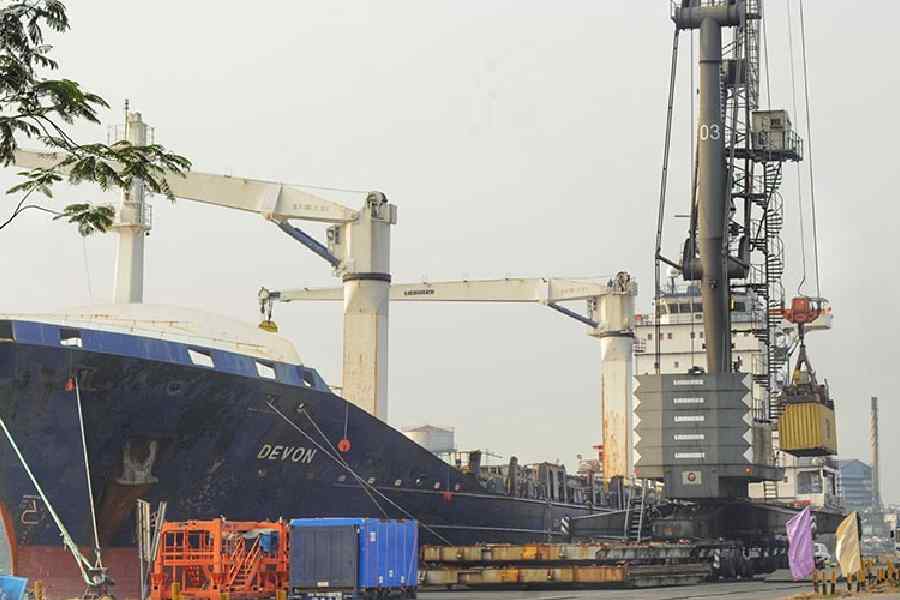The dock systems at Calcutta and Haldia reported an 8.04 per cent drop in cargo handling in the first five months of this fiscal, led by a sharp deceleration in coking coal movement as traders and importers diverted ships to deeper drafted ports in Odisha to save on cost.
The decline at Syama Prasad Mookerjee Port, the only riverine major port in India, is noticeable as the cluster of twelve government-owned major ports together posted a 4.87 per cent increase in cargo handling in the same period. The only other port which recorded a drop was Goa’s Mormugao.
A closer look at the cargo handled by Bengal’s ports reveals that Haldia Dock Complex (HDC) recorded a 27 per cent drop in coking coal movement, while volume dropped by 87 per cent in Kolkata Dock System (KDS).
Coking coal, used by steel mills in blast furnaces, is the most important cargo for SMP, Kolkata. In volume terms, SMPK handled 5.97 million tonnes of coking coal compared with 8.79 mt in April-August of FY24, a drop of 2.82 mt. Data sourced from BigMint shows India’s coking coal import has gone up by 6 per cent in the same period.
Port officials said the spike in seaborne bulk cargo rates, led by the Red Sea crisis, is forcing importers to avoid anchorages like Sandheads and Sagar under SMPK.
Compared with 13 cape vessels handled in April-August of FY24, only two baby cape vessels have been handled in the same period of this year. The fall in anchorage cargo traffic of coal has in turn affected the handling of this cargo by barges within the port and the Haldia floating jetty, amplifying the traffic loss.
“Since we are a riverine port and drought is less, vessels with larger parcel size come to the deeper ports such as Paradip and Dhamra, and then to our anchorages. From there, cargo would come to Haldia in barges. Earlier this two-port call cost $3 per tonne, it has now gone up to $8 per tonne,” Rathendra Raman, chairman of SMPK, told The Telegraph.
He, however, expressed confidence to turn the tide from October when fair weather allows big ships to come more often to the Sagar anchorage. “We are taking multiple steps to not only make up the drop, but post modest growth at the end of FY25,” Raman added.
The port is pinning hopes on resumption of thermal coal movement along the eastern coast. Raman said he is in touch with power plants in south India, exhorting them to use Haldia to source thermal coal for their requirement. “I have also met the chairman of Coal India,” Raman said.
In the past, CIL subsidiary Eastern Coalfield Ltd was a supplier of coal to Tamil Nadu power plants. Later, Mahanadi Coalfield of Odisha came up as the preferred supplier, and the coastal movement shifted to Paradip and Dhamra ports.
Raman said APGENCO of Andhra Pradesh will start procuring coal from ECL later this month. Panamax ships will load about 30,000 tonnes of cargo from Haldia and then top up another 40,000 tonnes from Paradip.
“Once people find confidence in this movement, more will follow,” the chairman said, adding NTPC is also considering using Haldia to take coal to the Vallur plant in Tamil Nadu. He expressed hope that NTPC will also source coal for its Bangladesh plant in future.
While SMPK is a major port for bulk cargo movement, officials are also pinning hope on container traffic. The port has been able to forge two direct shipping routes from SMPK to Zabel Ali in Dubai and two ports in south China. As they are expected to shorten transit time, the port is hoping users will take advantage of this. “We are already seeing some of the Nepal traffic coming to SMPK from Visakhapatnam,” Raman noted.











